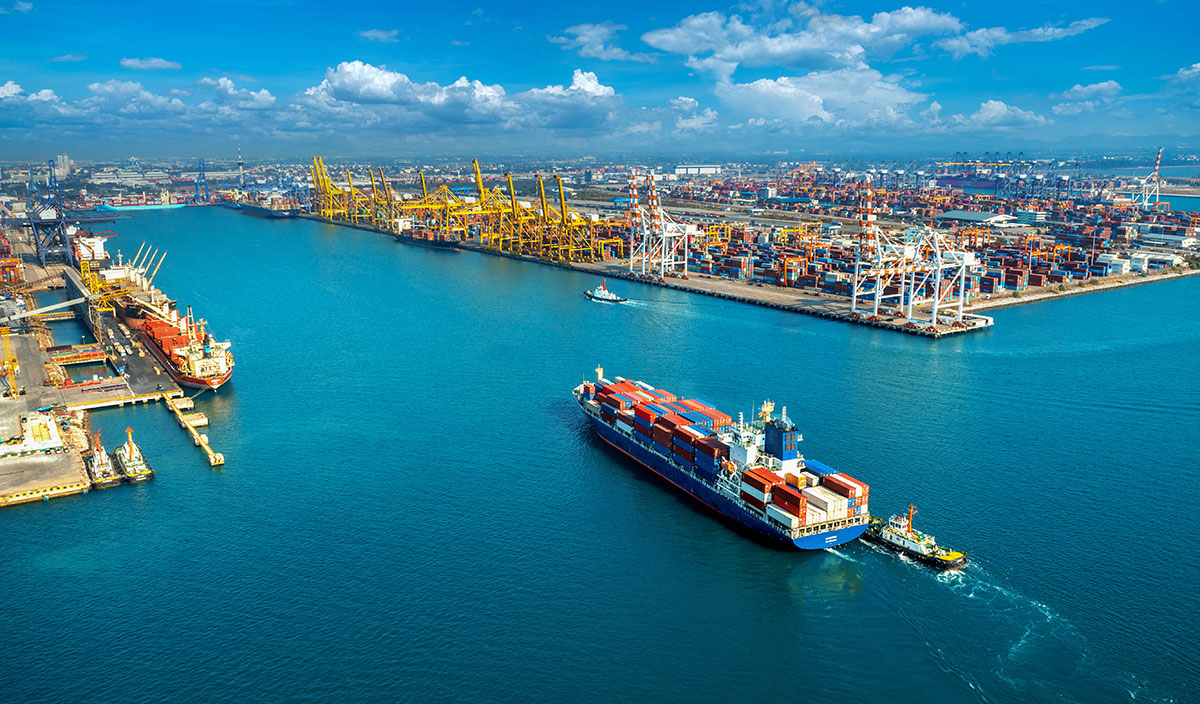
Labor disputes, geopolitical uncertainties, and imbalances in freight supply and demand are some of the logistics trends that compel logistics managers to reassess their supply chain strategies in 2024. The ongoing Red Sea crisis is affecting transportation modes such as sea and air shipping, albeit in distinct manners. Simultaneously, pervasive labor tensions in various logistics sectors may require logistics managers to maintain a high degree of flexibility.
We’re sharing some insider knowledge below to help your business stay afloat amidst the changes and challenges this year and beyond.
1. Red Sea Crisis Impacting Freight Rates
2. Panama Canal Restrictions Introduce Complexity
3. Impending East Coast Port Labor Talks Pose Significant Concerns
4. Increased Traffic Expected for West Coast Ports
5. Trucking Industry Continues to Grapple with Overcapacity
6. Air freight forwarders anticipate rising e-commerce activity
7. Forwarders Exercise Caution Amid Geopolitical Risks
1. Red Sea Crisis Impacting Freight Rates
The ongoing developments in the Red Sea present a formidable challenge for ocean freight, with shipper concerns revolving around fluctuating rates and alterations in vessel schedules. Since the initiation of vessel attacks in the Red Sea, ocean shipping rates have experienced significant hikes, leading to several carriers imposing additional surcharges. Some shippers, including Ikea, have already reported delays due to constraints on specific products.
According to reports from Supply Chain Dive, even if the Red Sea situation normalizes, shipping companies may still encounter challenges for months. Drawing parallels with the 2021 Suez Canal blockage lasting approximately six days, which disrupted schedules in the Mediterranean and North Sea ports for months, this crisis has already surpassed that duration.
2. Panama Canal Restrictions Introduce Complexity
Persisting drought restrictions at the Panama Canal are contributing to increased complexity, as cargo diversions become more prevalent, heightening the likelihood of delays. As of a December 15 advisory from the canal, vessels traversing the critical waterway are now constrained to 24 slots per day, a reduction from the pre-drought capacity of over 30 ship transits per day.
The crisis in the Red Sea has compounded challenges for shippers, altering their options. Companies seeking to import cargo from Asia to the U.S. East Coast may have initially considered the Suez Canal as an alternative to the Panama Canal. However, the risks associated with the Red Sea crisis, including attacks on vessels en route to the shipping channel, have prompted major carriers to reroute ships or suspend transit through this alternative route.
A January 24 report from Moody’s Investors Service highlights that without access to these canals, customers are confronted with 30%-40% longer sailing times and increased costs for trading with Asia.
3. Impending East Coast Port Labor Talks Pose Significant Concerns
Ongoing labor negotiations are a looming threat to ocean shipping, particularly in anticipation of the forthcoming East and Gulf Coast port labor talks.
The current labor contract between the International Longshoremen’s Association (ILA) and the United States Maritime Alliance is set to expire on September 30. According to a statement from the ILA, members have been advised to “prepare for the possibility of a coast-wide strike in October 2024.
Should a strike occur, potential repercussions will reportedly include port congestion. Additionally, such a scenario could lead to East and Gulf Coast ports losing the volume they had gained during the West Coast labor negotiations. Labor actions are also likely to remain a prominent concern, impacting not only ocean shippers but other modes of transportation as well.
4. Increased Traffic Expected for West Coast Ports
Various factors, including drought-related restrictions in the Panama Canal, the prolonged Red Sea crisis, and uncertainties in East and Gulf Coast port labor, lead analysts to predict a potential surge in volume for U.S. West Coast ports in 2024, potentially resulting in congestion.
As cargo volumes shift, industry leaders are anticipating intermodal volumes through truck and rail to increase. While heightened container traffic might lead to congestion, ample capacity exists among trucking companies, and additional chassis have been deployed in anticipation of growth.
5. Trucking Industry Continues to Grapple with Overcapacity
Throughout much of 2023, the trucking industry faced contraction, witnessing both large and small carriers exit the market due to bankruptcy, closure, or acquisition. There is an anticipation among experts that this logistics trend will persist in 2024.
The presence of a substantial transportation workforce hints at a situation where an excess of drivers and companies may be vying for business amid a soft freight market cycle.
6. Air freight forwarders anticipate rising e-commerce activity
The outlook for the air cargo market remains uncertain, despite a recent stabilization in volumes after last year’s rapid decline. Some anticipate a return to classic seasonality in 2024, albeit with a subdued tone.
However, the apparent easing of turbulence in the air cargo industry does not imply an absence of potential risks. According to Supply Chain Dive, the significant challenge lies in capacity and the influence of e-commerce players, particularly Shein, Temu, and TikTok. Their voracious appetite for capacity, coupled with a willingness to pay any price to secure it, is sidelining traditional air freight shippers. During the last 90 days of peak demand, e-commerce was consistently hitting 10,000 tons per day.
It is also projected that e-commerce will grow by 20% to 30%, with these companies absorbing 30% or more of global capacity. Additionally, as technology follows a three-to-four-year cycle and many individuals upgraded their home offices during the pandemic, consumers may soon seek to update their tech equipment.
7. Forwarders Exercise Caution Amid Geopolitical Risks
Persistent geopolitical risks, such as conflicts in the Middle East and Ukraine, introduce unpredictability to the market, making it more challenging for freight forwarders to provide reliable advice to customers. Additionally, potential market risks like increasing strike activity and congestion at the U.S.-Mexico border due to emerging nearshoring practices are also factors for forwarders to monitor.
While the air cargo market faces uncertainties driven by e-commerce demand and geopolitical risks beyond control, shippers can adopt strategic measures to position themselves for success. Industry leaders agree that considering hard Block Space Agreement (BSA) and charter capacity, exploring multimodal freight solutions such as sea-air and air-sea consolidations, and leveraging other charter products are great potential mitigation measures to navigate unforeseen disruptions.
Conclusion
Preparing for logistics trends and disruptions in 2024 necessitates a holistic and adaptive strategy. By embracing a proactive mindset and implementing robust measures, businesses can fortify their supply chains against potential challenges and trends. One of the ways to do that is by partnering with a seasoned freight forwarding company that provides tailored solutions for your needs no matter the market conditions.
Get in touch with TFI today!



